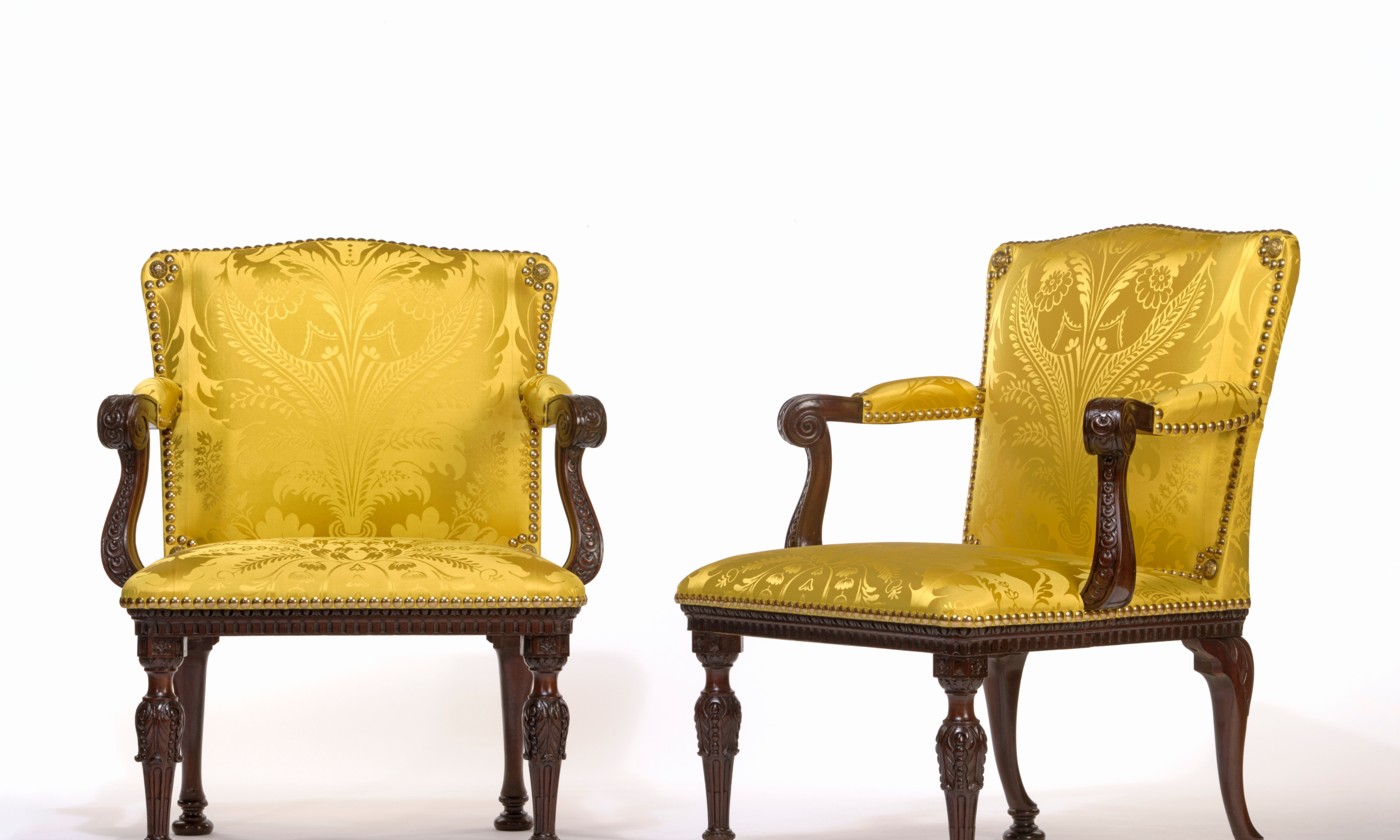The “magnificent” armchairs will be key objects in the redisplayed galleries, says Luke Syson, the director of the Fitzwilliam © The Fitzwilliam Museum, Cambridge
Gleamingly restored and sumptuously reupholstered in yellow silk damask, two magnificent Georgian armchairs, newly identified in a Wiltshire church as designed by William Kent and of international importance, have just gone on display as star objects in the Fitzwilliam Museum’s renovated Founder’s Galleries.
In late 2019 the eminent furniture historian Lucy Wood, a former senior curator at the Victoria and Albert Museum (V&A) in London, arrived too early for a memorial service to Mary Warnock, and so walked around admiring the church of St Mary’s at Great Bedwyn. She was astonished to come upon two battered but imposing chairs, covered in faded pink damask, which she immediately recognised—part of their carving is recorded in a drawing by William Chambers drawing in the V&A archives. “My eyes just about popped out of my head,” she recalls.
With the estate historian Graham Bathe, she proved they came from an early set by William Kent (1685-1748), one of the most influential designers of the 18th century. They were made for the family of his friend and most important client, the aristocrat architect Lord Burlington, credited with introducing Palladian architecture to England. Burlington’s earliest architectural project was Tottenham House for his sister and brother in law, a comparatively modest building in 1721 which he then massively enlarged in 1738. Inventories established the chairs were made and covered in yellow silk for one of the most splendid rooms, the Great Bedchamber—a room to awe visitors, not for sleeping in. Other Tottenham pieces survive in museums including the Philadelphia Museum of Art, and the Lady Lever in Liverpool.
In 1839, when the house was remodelled yet again, the chairs were given by the Marquess of Aylesbury to his neighbour, St Mary’s, where although their significance was forgotten, they were kept carefully, reupholstered rather amateurishly in the early 20th century but with the four original seat back decorative bosses carefully saved and re-used.
Wood says when she saw them they were too fragile to sit on, and conservation work and insurance would have cost a small fortune that the parish could not afford. However the Fitzwilliam, which only owned one heavily altered piece of Kent furniture, and was about to redisplay a suite of galleries, had just received a large bequest specifically for important furniture. The undisclosed six-figure sale has helped re-roof St Mary’s. “It is such a happy story all round,” Wood says.
Luke Syson, the director of the Fitzwilliam, says the “magnificent” chairs would be key objects in the redisplayed galleries, and their importance in the history of British design and patronage could not be overstated.
“Kent was the most innovative designer of furniture and interiors of his day in Britain, whose work was widely imitated to create a style we now call Kentian. They are also carved—quite brilliantly—from mahogany, a wood whose production depended on enslaved labour in the Caribbean. So they combine histories of beauty and exploitation.”
• The Founder’s Galleries reopen at the free admission Fitzwilliam Museum, Cambridge, on 15 March

